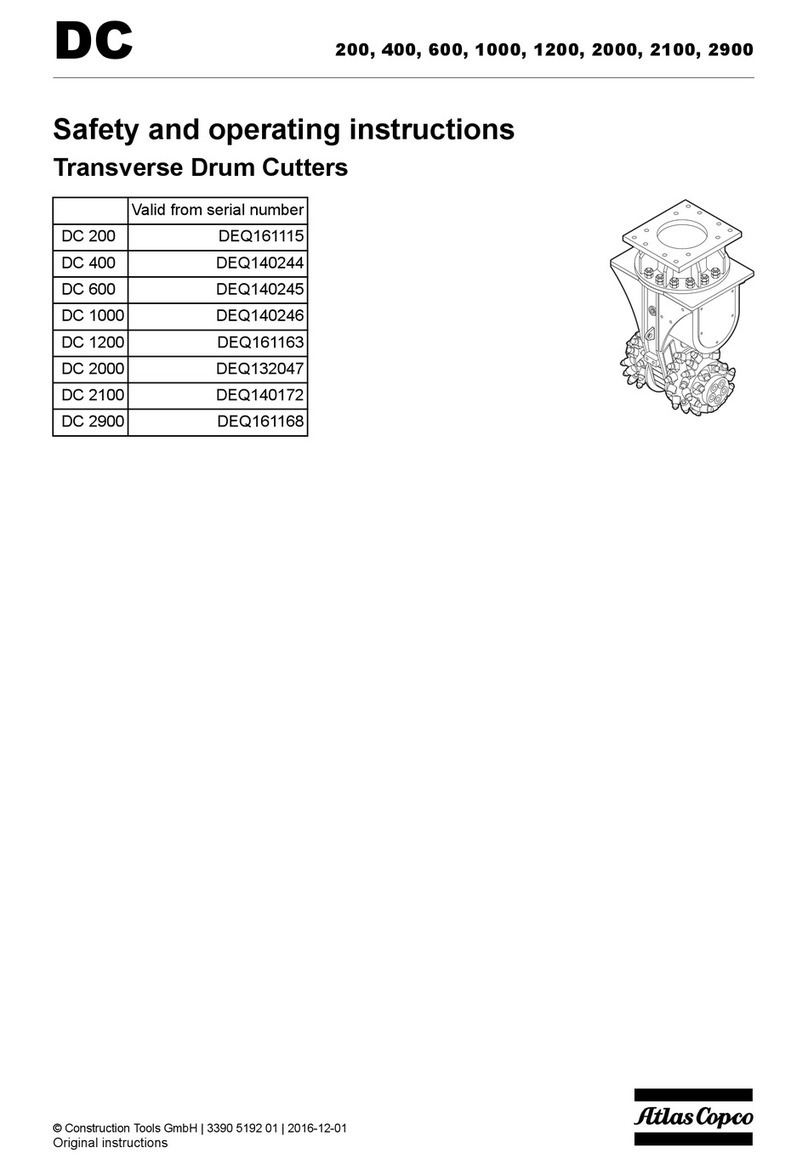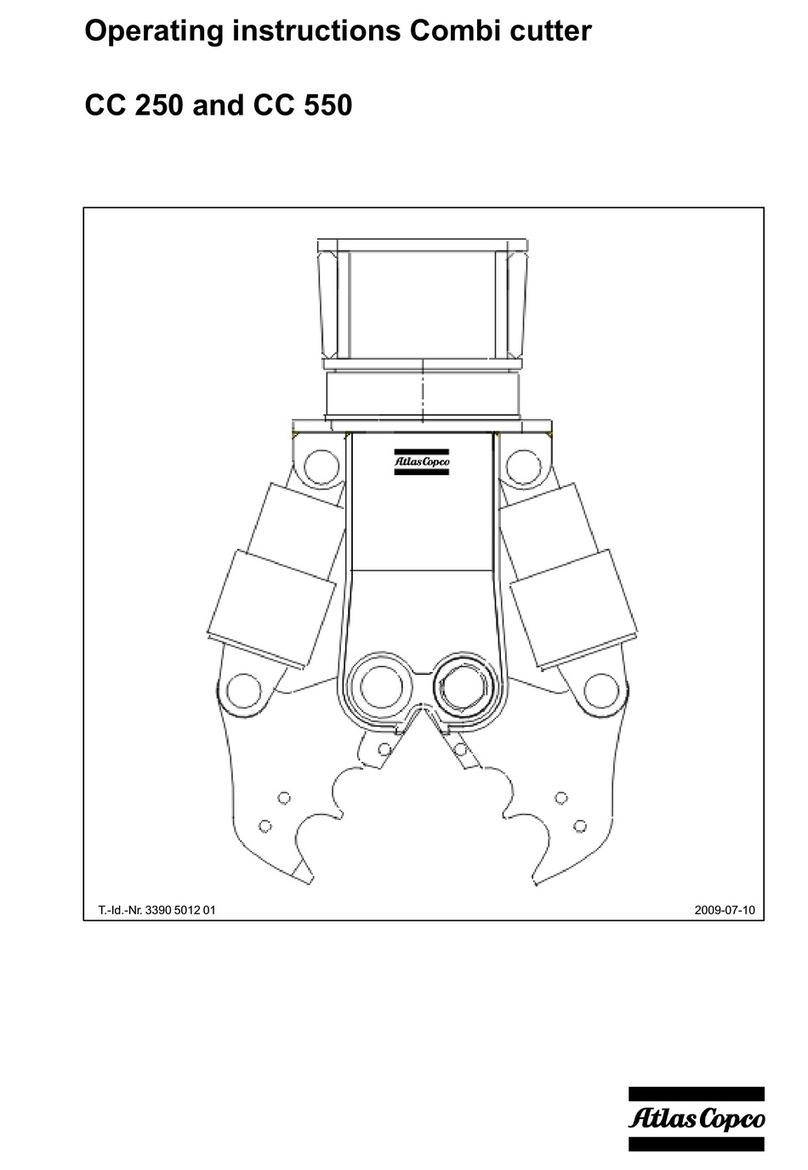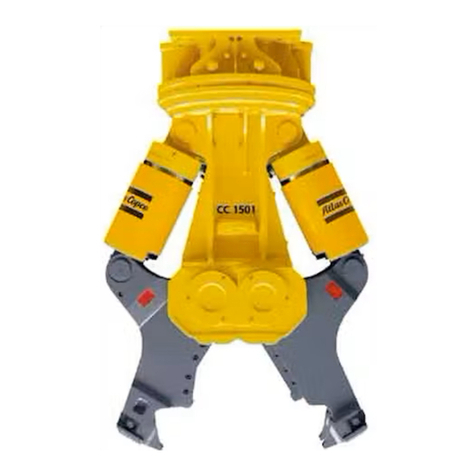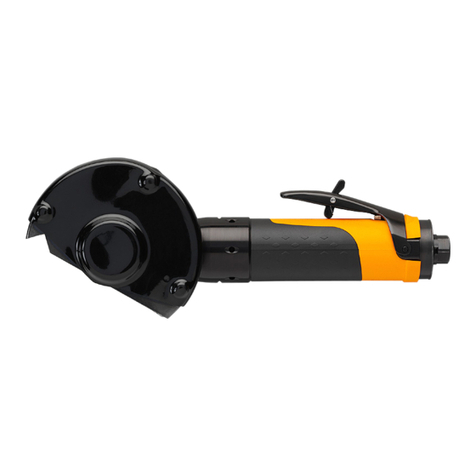
Qualification
Transporting the hydraulic attachment is only
permitted if carried out by people who:
●are authorised to operate a crane or a forklift truck
according to the applicable national provisions,
●know all the relevant national/regional safety
provisions and accident prevention rules,
●have read and understood the safety and transport
chapter of these Safety and operating instructions.
Installing, maintaining, storing and disposing of
the hydraulic attachment are only permitted if carried
out by people who:
●know all the relevant national/regional safety
provisions and accident prevention rules,
●have read and understood these Safety and
operating instructions.
Welding of the hydraulic attachment is only permitted
if carried out by qualified welders who:
●have been trained to operate MIG welding
equipment according to the national regulations,
●know all the relevant national/regional safety
provisions and accident prevention rules,
●have read and understood these Safety and
operating instructions.
Operating the hydraulic attachment is only permitted
if carried out by qualified carrier drivers. Carrier
drivers are qualified if they:
●have been trained to operate a carrier according
to the national regulations,
●know all the relevant national/regional safety
provisions and accident prevention rules,
●have read and understood these Safety and
operating instructions.
Testing the hydraulic installation is only permitted
if carried out by professionals. Professionals are
people who are authorised to approve a hydraulic
installation for operation according to the national
regulations.
Repairing the hydraulic attachment is only permitted
if carried out by professionals trained by Atlas Copco
Construction Tools. These professionals must have
read and understood these Safety and operating
instructions. Otherwise the operational safety of the
hydraulic attachment is not guaranteed.
Intended use
Only attach the hydraulic demolition cutter to a
hydraulic carrier of a suitable load-bearing capacity.
Read the carrier manufacturer's Safety and Operating
Instructions before attaching the hydraulic demolition
cutter to the carrier and operating it. Observe all
instructions.
Only use the hydraulic jaw function of the equipment
for the following work:
●light demolition work, e.g. narrow, lightly reinforced
concrete elements, masonry
●stripping out and reconstructing interiors
Intended use also implies observing all instructions
in these Safety and Operating Instructions.
Use other than intended
Never use the hydraulic demolition cutter
●to cut steel plate and sheet metal
This damages the hydraulic demolition cutter.
●as tank shears
●to cut high-quality steel grades, tensile strength
> 370 N/mm², such as railway rails, tram rails and
spring steel
This may damage the hydraulic demolition cutter.
Rails which break during the cutting process may
be flung away and can cause serious injury if
people are hit by them.
●to cut reinforcements with a tensile strength
> 500 N/mm²
This may damage the hydraulic demolition cutter.
●to cut wire rope
This may damage the hydraulic demolition cutter.
Wire ropes that are under tension can spring away
during the cutting process. This can lead to serious
injury if the ropes strike a person.
●to pull/tear at girders, braces and walls.
This damages the hydraulic demolition cutter and
adapter plate. The carrier may lose stability. It can
topple over and cause injuries.
●to hit or chop
This destroys the hydraulic demolition cutter.
●as a crow bar
This destroys the hydraulic demolition cutter.
●to push debris
This destroys the hydraulic demolition cutter.
●to move the carrier supported by the hydraulic
demolition cutter
This severely damages the hydraulic demolition
cutter.
© 2011 Atlas Copco Construction Tools GmbH | No. 3390 5102 01 | 2011-08-02
Original instructions
10
CC 650, 950SAFETY INSTRUCTIONS
































